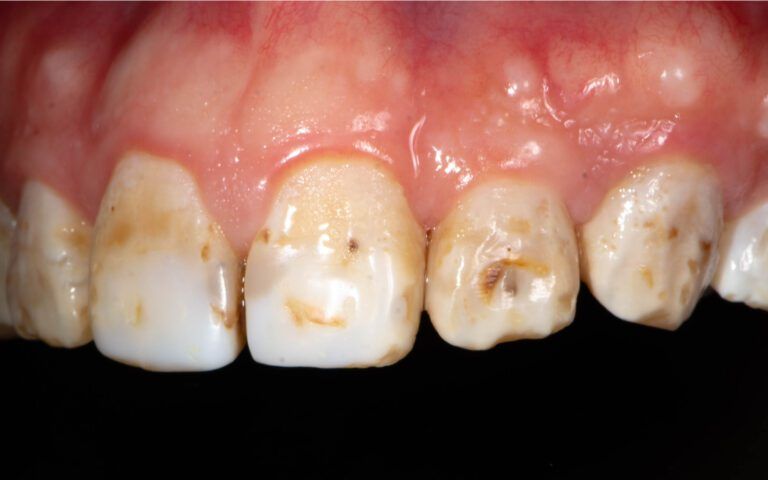One thing frequently encountered by dentists is patients with brown spots developing on their teeth. If you’ve looked in the mirror and seen your teeth beginning to develop brown spots, it’s time for a visit to your dental care provider. When you speak to them they’ll be able to help you find ways to slow the advance of brown spots and perhaps eliminate them altogether. These spots can come in a variety of colors, including black-brown and yellow-brown. Over time they can grow to different sizes and can represent a threat to our oral health. We’ll be going over a few facts about brown spot fluorosis, and what you can do to prevent, or reverse it.
How Brown Spot Fluorisis Starts
It probably comes as no surprise that brown spot fluorosis most commonly starts from drinking or eating foods that are strong in tannic acid. Red wine, coffee, and strong teas all contain this staining agent and can contribute to the development of these spots. If poor oral hygiene practices are involved, it’s entirely possible for these stains to become permanent. Other ways that brown spot fluorosis can begin include:
- Tobacco Use – Regardless of how you imbibe tobacco, it can represent a serious concern to your oral health. Among these concerns is the development of dark spots on the teeth. These can be some of the most difficult stains to remove from the teeth.
- Tartar – When sugars and food particles remain in the mouth, bacteria have everything they need to form plaque. That yellowish, sticky film that forms on your teeth is known as plaque and can form into difficult to remove tartar if left unaddressed. When tartar forms it will take a trip to the dentist to remove it.
- Tooth Decay – Acid is a byproduct that’s produced when streptococcus mutans, the bacteria responsible for tooth decay, consume sugars. This acid is very effective at weakening the enamel, allowing it to erode faster. This, in turn, leads to tooth decay.
- Aging – Unfortunately the steady degradation of our teeth throughout our lives is a fact of aging. While taking effective care of your teeth can certainly help them last, the enamel will still thin over time. When it does, the yellow dentin underneath can become more visible.
- Genetics – Some oral health concerns, including a tendency towards brown spot fluorosis, can be inherited. This is usually the result of congenitally weak enamel, problems with bone formation, and imperfect teeth. Each of these can be responsible for the formation of brown spots.
Your Dentist Has Methods Of Treating Brown Spot Fluorosis
The approach your dentist takes to treating your brown spot fluorosis will largely depend on the source of the condition. Regular discoloration can be reversed through a variety of cosmetic procedures. If thinning enamel is responsible, restoration techniques may be necessary. In many cases, the stain may not be able to be removed, and a veneer will have to be put in place to hide it. Speaking to your dentist is the best way to know what the right approach is for you.


